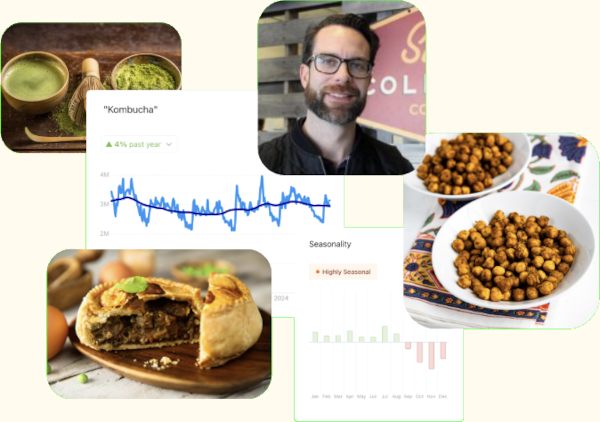Category Analysis - Fondant

Overview of the Fondant Industry
Fondant, that smooth, malleable icing that graces the surfaces of wedding cakes and elaborately decorated pastries, has become a staple in the confectionery industry. Derived from the French word 'fondre,' meaning to melt, this sugar paste is prized for its versatility, allowing pastry chefs and amateur bakers alike to create stunning designs that serve both aesthetic and gustatory purposes. In recent years, the fondant market has transformed, paralleling shifts in consumer behaviour and culinary trends, indicating a dynamic segment ripe for examination.
According to a report by Mordor Intelligence, the fondant market was valued at approximately USD 1.5 billion in 2020 and is projected to reach nearly USD 2 billion by 2026. This staggering growth can be attributed to the increasing popularity of bespoke baking and celebratory cakes, particularly in Western nations where social gatherings are often marked by indulgent confectionery.
Recent Trends and Changes
The fondant industry has experienced a renaissance, aided by the rise of reality baking shows and social media platforms that foster a culture of sharing visually appealing food content. Consequently, more consumers are taking up home baking—the BBC has reported a sharp increase in baking ingredients sales during lockdowns, with fondant being a favourite among hobbyists eager to replicate the artistry seen online.
A noteworthy trend is the increasing demand for flavoured fondant, deviating from the insipid vanilla that has long dominated the market. Brands such as Satin Ice have ventured into the flavoured fondant realm, introducing options such as chocolate, strawberry, and even lemon, satisfying the palate alongside the visual feast. Moreover, the rise of vegan and gluten-free diets has led to the creation of fondant alternatives made from plant-based components, catering to a health-conscious clientele that does not wish to miss out on celebratory cakes.
The Economics of the Fondant Industry
The economics of the fondant industry reveal a nuanced landscape tinged with fluctuation. Initially, artisans faced challenges including high production costs and an overly saturated market. However, the recent bump in consumer interest has seen market dynamics shift, resulting in both growth and contraction among smaller producers and larger corporations alike.
This dichotomy results from increasing costs of raw ingredients such as sugar and glycerine, which are essential for fondant production. Rising prices due to global supply chain disruptions, a consequence of both geopolitical tensions and natural disasters, have had significant impacts. The price of sugar alone, according to the Statista, has been highly volatile and affects the pricing strategies of fondant manufacturers.
Growth and Contraction
While large companies like Cake Craft and DecoPac have capitalised on the growing demand by scaling production, some small-scale producers have struggled to keep pace, leading to a phenomenon of market contraction as niche bakeries shutter under financial pressures. The future appears promising, but artisans must adapt—embracing innovation while keeping an eye on consumer preferences.
Moreover, e-commerce platforms have significantly affected market structure, enabling smaller producers to reach wider audiences without the burden of physical retail space. This shift is favouring artisanal brands that promote unique and locally sourced products, setting up a burgeoning direct-to-consumer market.
Major Players in the Fondant Industry
The fondant market showcases a myriad of players from large corporations to boutique operations. Key contenders include global players like McKinsey & Company, whose market analysis points to a consolidation trend among suppliers. Another leading name is Renshaw, known for institutional-grade fondant widely used in bakeries across the UK.
In addition to these larger firms, small brands such as Sweet Sticks in New Zealand and Perfecting the Palate in the UK embody innovation through unique flavour profiles and organic ingredients. Such brands are not only competing on aesthetics but are also appealing to health-conscious consumers seeking authentic, high-quality products.
Conclusion
In conclusion, the fondant industry offers a compelling case study of evolution in the face of changing consumer tastes and macroeconomic factors. As production methods continue to adapt and small players carve out niches in an increasingly competitive landscape, both consumers and producers are likely to enjoy a more diverse array of options in the years to come.
Brands will need to remain vigilant in understanding the price volatility of raw materials while also harnessing the power of social media marketing to reflect changing consumer preferences. The delicate art of fondant-making, much like the parameters of the industry itself, will require persistent innovation and resilience in navigating the market's future.
Example Products in this Category:
Brands in this Category:
| Name | Story | Brand Categories | |
|---|---|---|---|
| Name | Story | Brand Categories | |
| Sugar and Crafts | At Sugar and Crafts, we only use the finest ingredients in our fondant. The result is a silky smooth finish that will take your cakes to the next level. PREMIUM Fondant guarantees a flawless finish every time. | Fondant,Gum Paste,Food Coloring |

























